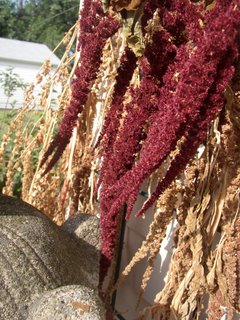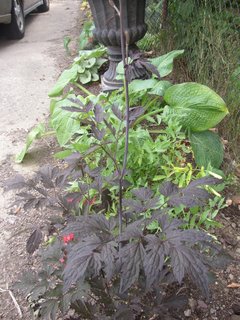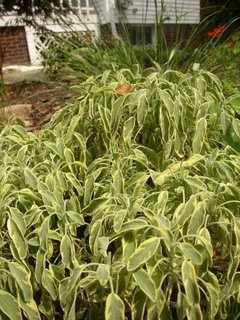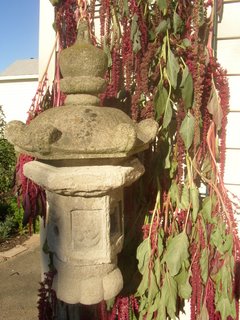
In a recent comment, Judith asked me how my amaranth had dried--I posted about tying some broken stalks to a wire trellis behind my Japanese lantern a few weeks back to see what would happen. Well, that amaranth is definitely dry! It turned a lovely golden wheat color, which is not quite what I was expecting but beautiful nonetheless.
It really surprises me that the sun bleached it out so much because I had taken a few of the broken branches indoors to dry on coat hooks in my entryway at the same time. The flowers on those stalks, from the same 'Hopi Red Dye' plants and already bone-dry, stayed approximately the same shade of red they sported when I hung them up.
In the picture above, you can contrast the color of the sun-dried amaranth with the shade-dried amaranth. (I temporarily hung one shade-dried stalk on top of the sun-dried to show the difference.)
I will definitely shade-dry a few more branches for autumn arrangements, but I'll also leave the sun-dried ones up on the trellis. They add a bit of the natural and organic to the cement-and-siding area over there, and fall is in the air so they're showing appropriate color for the season. I might tie up some spent sunflowers, too, to complete the look.
Has anybody ever left the flower stalks to dry outside, or not pulled the plants out until the following spring? I'm curious whether the birds will eventually find and eat the amaranth grains. I would love to hear from someone like Sigrun, Harvest or anyone else who can let me know whether to expect a few new bird visitors... or not!

























